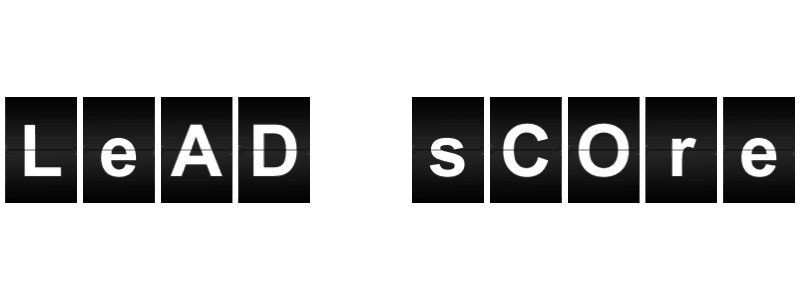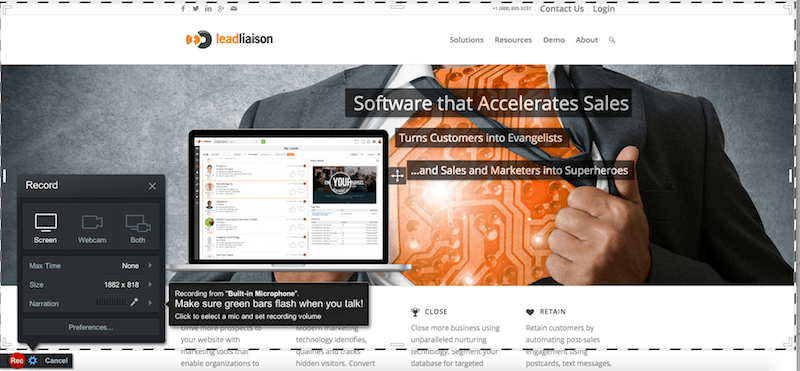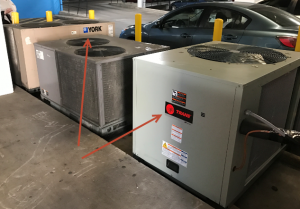5 Ways to Keep Your Marketing Organized
 I was working with one of our new clients the other day and they asked how successful companies get started with marketing automation. Without hesitation, I answered “they get organized.”
I was working with one of our new clients the other day and they asked how successful companies get started with marketing automation. Without hesitation, I answered “they get organized.”
It sounds simple, sure, but when you’re dealing with a database of thousands of prospects and hundreds of pieces of content, it gets a bit more intimidating. Sure, you could send generic emails and event invites to your whole database, but are you going to get great engagement? Probably not. Unless you’ve got a way to personalize content and track ROI, you’re just throwing stuff at the wall to see what sticks.
Luckily with Lead Liaison you don’t have to do it on your own. Let’s look at five awesome ways you can keep your marketing team on top of everything.
- Segmentations – The way you segment your database is key to how successful any campaign will be. We can automatically build segmentations based on your prospects’ individual profiles. All you do is tell our system what to look for. Do you want to market to all CMOs in the state of Georgia in the entertainment industry? Great, we’ll search your database, find all of them, and make a custom marketing list. Best of all, we’ll add new prospects as they come in and remove them if they no longer fit your criteria. Learn more about segmentations here.
- Tagging – Tags are one of the best ways to keep track of who is interested in what. When a prospect engages with your content, attends a show, views a webinar, or any other engagement you can think of, we can automatically tag them. Say they attended your 2017 We’re Awesome Webinar. We can tag them with the event name automatically when they attend. Later, if you want to build a nurture drip campaign around attendees, just search for prospects with that tag. Easy! Oh, and it’ll be even easier at live events with some cool things coming down the line.
- Campaigns – When we say campaign, we’re talking about your marketing efforts around a specific topic or event. Say you have a new product coming out. Your marketing for that product would go into a Lead Liaison campaign. And, because we’re not just an email marketing platform, we would also track your multi-channel marketing pieces. Since you can add a cost to the campaign, you’d have a super easy time finding your ROI. And because you’ve segmented and tagged your prospects for targeted content, that ROI will look pretty nice.
- Programs – Think of a program as a campaign of campaigns. While you would have a campaign for a specific trade show, you would have a program for all trade shows that year. And yes, this includes the costs of the individual campaigns. This could help you answer that age-old question, did you actually make money from the trade shows you attended this year? In my book, that’s a must-know for any B2B organization.
- Folders – Folders are great. You can put any list, segmentation, automation, campaign, or program into a folder. Want to see all of your marketing content that’s geared toward CMOs? Look in your CMO folder. Want to see all of your drip campaigns? Look in the drip campaign folder. Forget searching through pages of content if you want to make a tweak. Yes, it will take some initial setup, but you’ll be paid back the time spent tenfold.
The big takeaway is that organization will streamline your marketing pushes. Imagine being able to send truly relevant content to the right people, and then having the time to figure out who really is a qualified lead. I can tell you this, the sales team will love you for it, and the execs will love the detailed ROI.
Want to learn more about who Lead Liaison can help you organize? Give us a shout!








 I work for Lead Liaison as a solutions specialist. I travel with our sales team on occasion to conduct trainings and have deeper level discussions with clients. On one of my trips, something caught my eye. I’m not quite an HVAC expert, but I’m familiar with the big name brands that are out there after owning a few homes and having HVAC units in my own house. You learn a lot when you have to foot those thousand dollar bills to repair air conditioners ;-). As I entered a parking lot after my meeting, I noticed two large commercial HVAC units, from two different and respectable brands, Trane and York.
I work for Lead Liaison as a solutions specialist. I travel with our sales team on occasion to conduct trainings and have deeper level discussions with clients. On one of my trips, something caught my eye. I’m not quite an HVAC expert, but I’m familiar with the big name brands that are out there after owning a few homes and having HVAC units in my own house. You learn a lot when you have to foot those thousand dollar bills to repair air conditioners ;-). As I entered a parking lot after my meeting, I noticed two large commercial HVAC units, from two different and respectable brands, Trane and York.

